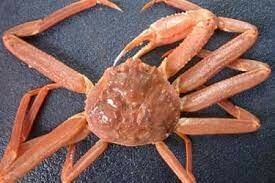BELLEVUE, Wash. — When salmon, salamanders or other aquatic animals poop or shed skin cells, they leave behind traces of their DNA in the water, like clues left behind at a crime scene.
It’s this evidence that Kit Paulsen is seeking as she wades into an urban creek east of Seattle and fills a 4-liter jug with water. In a few minutes, she has a sample that will reveal whether a tiny destructive New Zealand mudsnail is present in the salmon-bearing stream.
At one-eighth of an inch, the snails are incredibly hard to find. That’s why scientists are turning to environmental DNA, or eDNA, an emerging surveillance tool that detects the presence of an organism by analyzing cellular material such as urine, hair, feathers or skin cells that are left behind in the environment.
Whether it’s Asian carp in Chicago-area waters, salamanders in Kentucky or great crested newts in the United Kingdom, biologists are using the tool to help look for reclusive or rare imperiled species, monitor unwanted creatures or gauge the overall biodiversity of a lake or stream.
Read the full story at CBS>>
Want to read more about invasive species? Click here...






